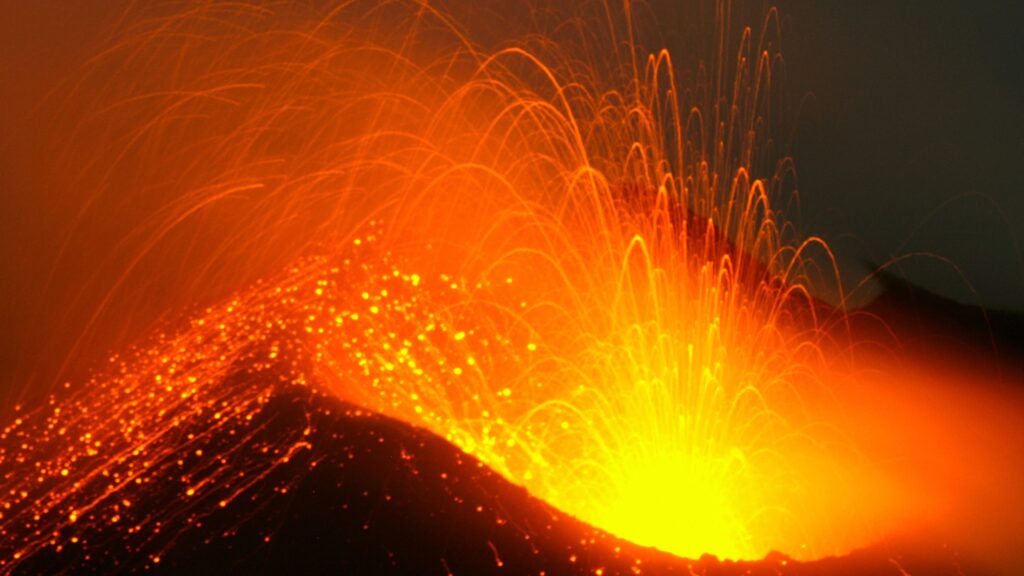Dispelling myths about the Earth’s core, recent research reveals that it is not hollow but filled with a variety of precious metals such as platinum, ruthenium, and even gold. Despite the tantalizing prospect of these riches, accessing them buried over 1,850 feet beneath solid rock remains impossible for humanity. However, a groundbreaking discovery in Hawai’i’s volcanoes suggests that trace amounts of these coveted metals are making their way up from the depths of the planet.
Nils Messling, a geochemist at Göttingen University, expressed his excitement about the findings, stating, “Our data confirmed that material from the core, including gold and other precious metals, is leaking into Earth’s mantle above.”
In a study published in the journal Nature, Messling and his team reported the detection of trace amounts of the precious metal ruthenium in volcanic rock samples collected across Hawai’i. Specifically, they identified the presence of the ruthenium isotope, ¹⁰⁰Ru, which was unexpected.
While ¹⁰⁰Ru is naturally found in Earth’s mantle, it is more prevalent in the core, where the majority of the planet’s precious metals reside. Due to the subtle differences between the ruthenium in the core and mantle, conventional analysis methods could not distinguish between the two. However, new isotopic analysis techniques developed by researchers at Göttingen University enabled them to identify the unique signature of ¹⁰⁰Ru originating from the core-mantle boundary.
This discovery has significant implications, indicating that Earth’s core, previously thought to be beyond reach, releases small amounts of its contents during volcanic eruptions.
Matthias Wilbold, a co-author of the study, highlighted the scale of this phenomenon, stating, “We can now also prove that huge volumes of super-heated mantle material—several hundreds of quadrillion metric tons of rock—originate at the core-mantle boundary and rise to Earth’s surface to form ocean islands like Hawaii.”
The focus now shifts from whether this process occurs to understanding when and how it has shaped Earth’s history.
Andrew Paul, Popular Science’s staff writer covering tech news, emphasizes the groundbreaking nature of these findings, stating, “Our discoveries offer a new perspective on the inner dynamics of our planet.”
In today’s fast-paced world, it can be easy to get caught up in the hustle and bustle of everyday life. With so many demands on our time and energy, it’s important to take a step back and focus on self-care. Self-care is a crucial aspect of maintaining our overall well-being, and it’s something that we should prioritize in our daily lives.
One way to practice self-care is by taking time for yourself each day. This could be as simple as taking a few minutes to meditate or practice mindfulness, or it could involve engaging in activities that bring you joy, such as reading a book, going for a walk, or spending time with loved ones. By setting aside time for yourself each day, you can recharge and rejuvenate, allowing you to better cope with the stress and challenges that life throws your way.
Another important aspect of self-care is taking care of your physical health. This means eating a balanced diet, getting regular exercise, and getting enough sleep each night. By taking care of your body, you can improve your overall health and well-being, which can have a positive impact on your mental health as well.
It’s also important to set boundaries and learn to say no when necessary. It’s easy to get caught up in trying to please others and take on more than we can handle, but this can lead to burnout and exhaustion. By setting boundaries and learning to prioritize your own needs, you can protect your mental and emotional well-being.
Self-care is not selfish – it’s necessary. By taking care of yourself, you can better take care of others and live a more fulfilling and balanced life. So take some time for yourself each day, prioritize your physical and mental health, and set boundaries to protect your well-being. Your future self will thank you.

